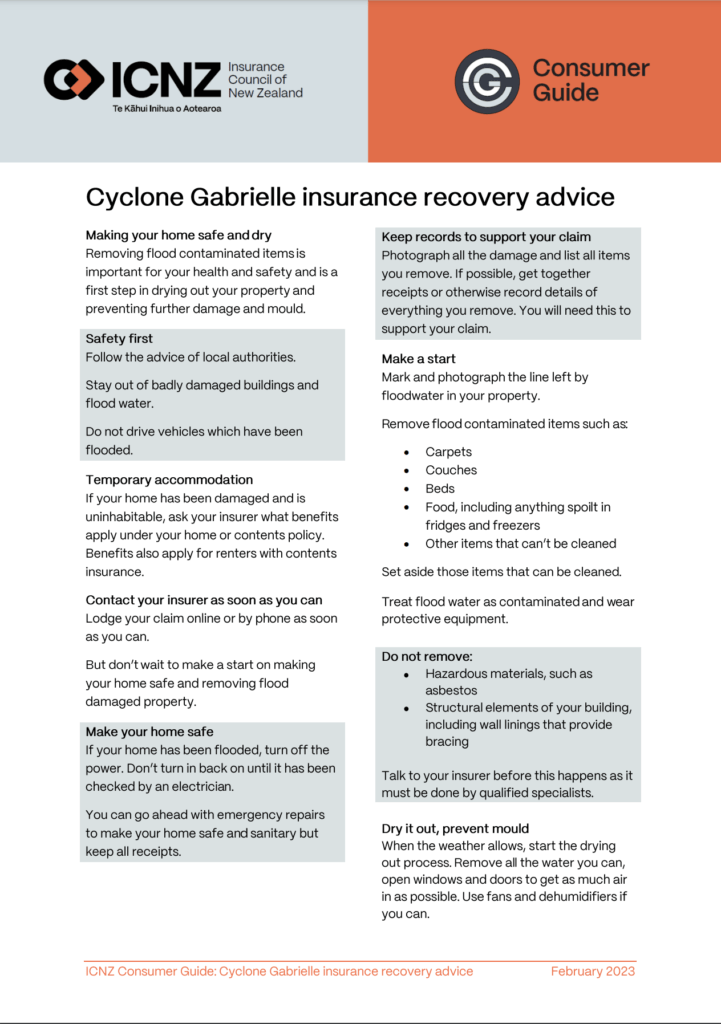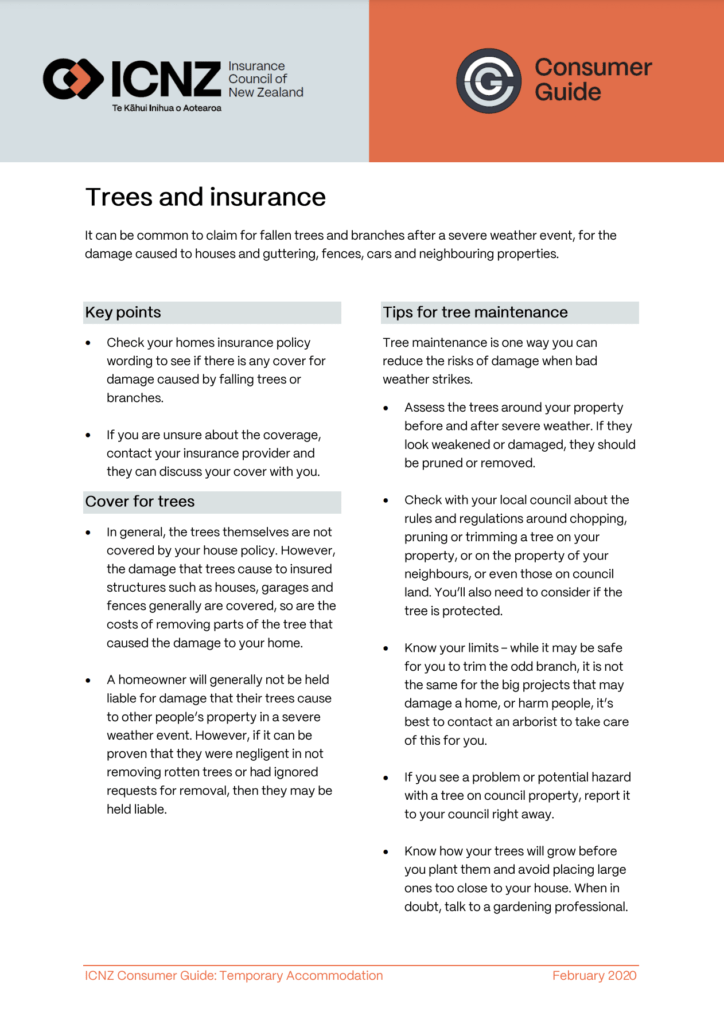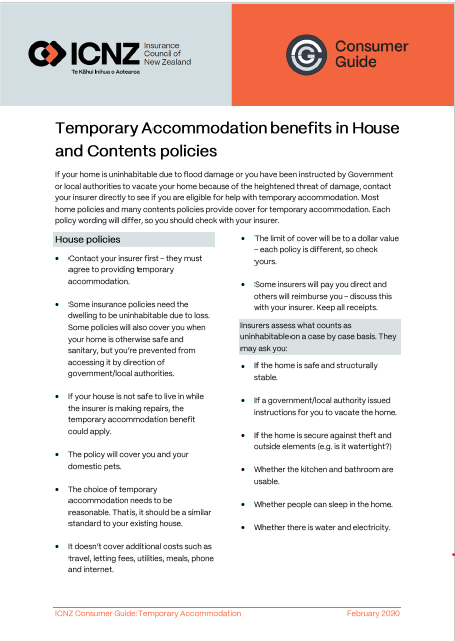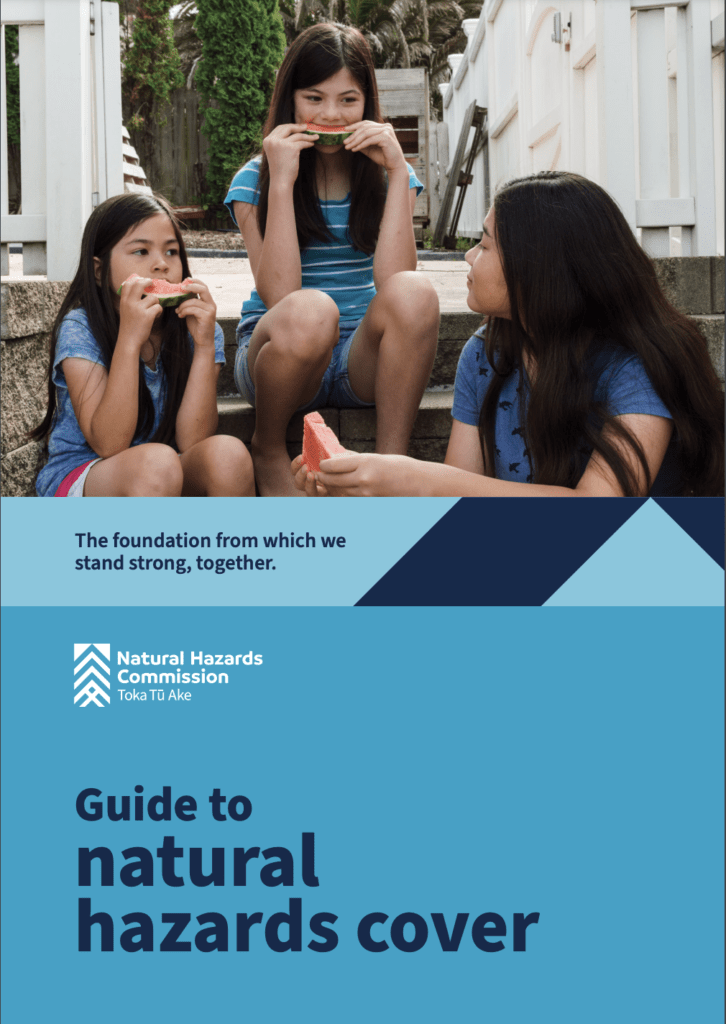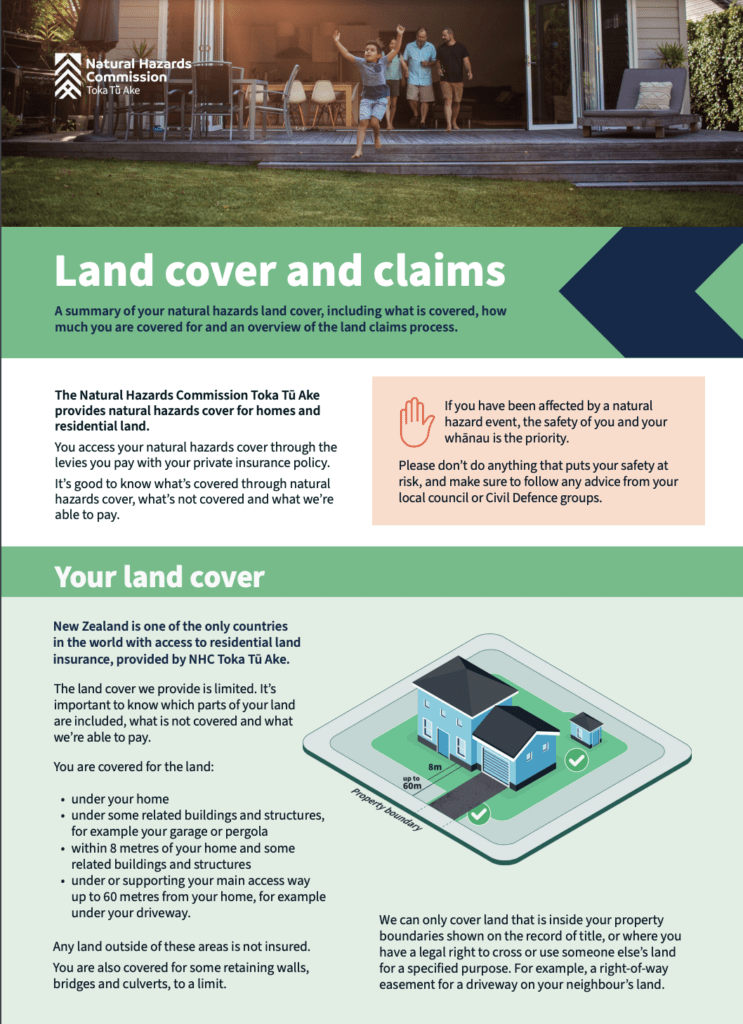Disaster Recovery
Te Hokinga ki te Ora i muri i te Aituā
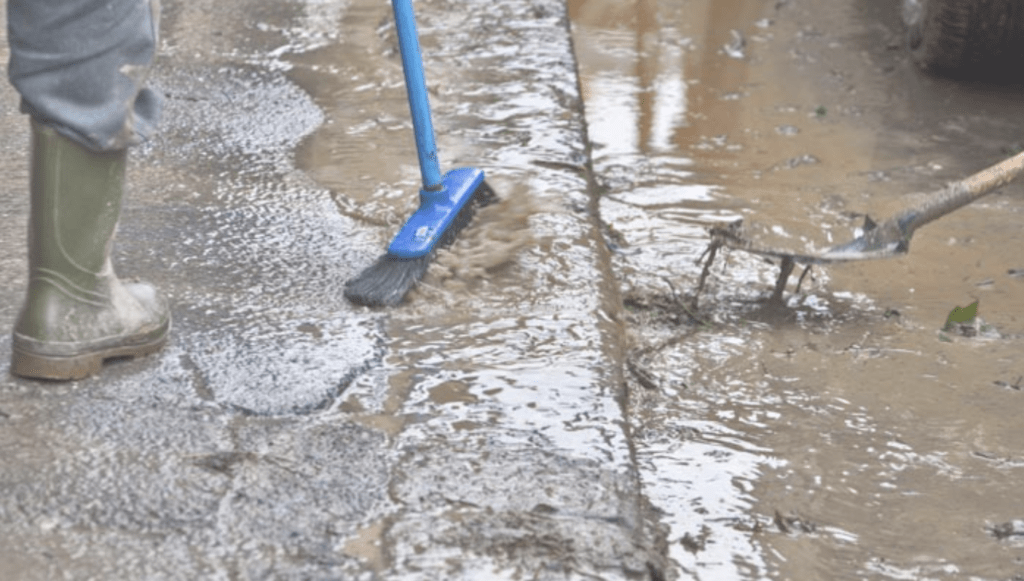
Disaster Recovery
Te Hokinga ki te Ora i muri i te Aituā
| Category | Definitions | Examples |
|---|---|---|
| 1 | Repair to previous state is all that is required to manage future severe weather event risk. | Minor flood damage to repair but no need for significant redesign/retrofitting. |
| 2C | Community level interventions are effective in managing future severe weather event risk | Local government repairs and enhances flood protection schemes to adequately manage the risk of future flooding events in the face of climate change effects. |
| 2P | Property level interventions are needed to manage future severe weather event risk, including in tandem with community level interventions. | Property specific measures are necessary e.g., improved drainage, raising houses is necessary. Benefits accrue to property owners but some may face affordability issues. |
| 2A | Potential to fall within 2C/2P but significant further assessment required. | Interventions may be required / possible but insufficient information to provide initial categorisation (these may subsequently move between “2” categories or to categories 1 / 3). |
| 3 | Future severe weather event risk cannot be sufficiently mitigated. In some cases some current land uses may remain acceptable, while for others there is an intolerable risk of injury or death. | In the face of enhanced climate risks the property may face unacceptable risk of future flooding. Other property could be subject to unstable land that poses an ongoing risk. |
Category 1
| Category 1 | |
|---|---|
| Definitions | Repair to previous state is all that is required to manage future severe weather event risk. |
| Examples | Minor flood damage to repair but no need for significant redesign/retrofitting. |
| What does this mean for my claim? | No impact to claim, claim will continue to progress as normal. Insurance pays for physical damage from the event, up to the sum insured or any other policy limits and benefits that may apply. |
| What does this mean for my ongoing insurance? | Home/contents insurance will remain available, no changes to terms expected. At renewal, decisions are based the same as everywhere in NZ – on claims frequency, changes to risk and the insurer’s risk appetite which may include more granular rates being applied. Assumes repairs are completed. |
Category 2C (Community)
| Category 2C (Community) | |
|---|---|
| Definitions | Community level interventions are effective in managing future severe weather event risk. |
| Examples | Local government repairs and enhances flood protection schemes to adequately manage the risk of future flooding events in the face of climate change effects. |
| What does this mean for my claim? | No impact to claim, claim will continue to progress as normal. |
| What does this mean for my ongoing insurance? | As done following the Westport and Edgecumbe events, insurers will continue to support communities whilst wide scale interventions are worked through. Should these works be deferred or be shown to have not sufficiently mitigated the risks, insurers may re-evaluate ongoing cover. There could be a variety of approaches from insurers, some will continue with existing terms, some may place new risks under more scrutiny than existing customers, and others, at renewal time, may be looked at on a case-by-case basis. Depending on the level of risk, normal underwriting levers would be applied – e.g., price, excess, or exclusion of some hazards until preventative work has been completed by the relevant council(s). |
Category 2P (Property)
| Category 2P (Property) | |
|---|---|
| Definitions | Property level interventions are needed to manage future severe weather event risk, including in tandem with community level interventions. |
| Examples | Property specific measures are necessary e.g., improved drainage, raising houses is necessary. Benefits accrue to property owners but some may face affordability issues. |
| What does this mean for my claim? | No impact to claim, claim will continue to progress as normal. Insurance pays for physical damage from the event up to the sum insured or any other policy limits and benefits that may apply. There is no cover available for the costs of planning or implementing improvements or changes to design to prevent future damage. Physical damage costs would be likely cash settled to allow homeowner to make informed decisions on use of funds. A cash settlement (from the physical damage) can be used by the customer towards other improvements or interventions that may be required e.g., lifting the home. |
| What does this mean for my ongoing insurance? | If councils recommend or require property level works, homeowners should contact their insurer to discuss any impacts on claims or policies. If the customer completes the property level interventions so that the risk is reduced to an acceptable level then the home will be insurable like any other home i.e. insurers will look at flood models, previous claims and what mitigations have been undertaken. If the customer does not complete required interventions (or in the process of) then different policy options may be available such as excesses, premiums and/or exclusions. On a case-by-case basis this may include not continuing cover as a last resort. |
Category 2A (further assessment required)
| Category 2A (further assessment required) | |
|---|---|
| Definitions | Potential to fall within 2C/2P but significant further assessment required. |
| Examples | Interventions may be required / possible but insufficient information to provide initial categorisation (these may subsequently move between “2” categories or to categories 1 / 3). |
| What does this mean for my claim? | No impact to claim, claim will continue to progress as normal. Insurance pays for physical damage from the event up to the sum insured or any other policy limits and benefits that may apply. Insurer would likely cash settle claim to provide flexibility to customer for options once council categorisation takes place. If managed repair already underway, nothing more site specific would take place until the property is categorised. If customer wishes to put claim on hold, insurer can complete assessments but hold the settlement until the customer is ready. Insurers will honour temporary accommodation benefit up to the limit in your policy. |
| What does this mean for my ongoing insurance? | Treat the same as above. Insurance available but insurers will look at individual property level information and apply normal underwriting (looking at models, previous claims, mitigations) and apply terms if needed. |
Category 3
| Category 3 | |
|---|---|
| Definitions | Future severe weather event risk cannot be sufficiently mitigated. In some cases some current land uses may remain acceptable, while for others there is an intolerable risk of injury or death. |
| Examples | In the face of enhanced climate risks the property may face unacceptable risk of future flooding. Other property could be subject to unstable land that poses an ongoing risk. |
| What does this mean for my claim? | No impact to claim, claim will continue to progress as normal and would be cash settled. Insurance pays for physical physical damage from the event up to the sum insured or any other policy limits and benefits that may apply. There is no cover for undamaged property. The customer can take this payment and rebuild or reinstate at another site.If the home is repairable the maximum payable is the repair cost (up to the sum insured or any other policy limits and benefits that may apply. You may wish to defer undertaking repair work on your property until you have decided whether to accept any Council offer and move to another location. |
| What does this mean for my ongoing insurance? | If residential occupation becomes an unacceptable land use then once the retreat process is concluded insurers would be very unlikely to offer any cover for the property. Insurers would be extremely unlikely to have risk appetite to continue cover where it has been deemed by council/government to be unsafe. |
Questions and Answers
What does my Council putting me in Category One, Two or Three mean for my claim overall?
Your insurance company will continue to be there for you to settle your claim.
We recognise this is a very unsettling time with many big decisions on the horizon and you may not have all the answers.
Your insurance contractual rights under your claim are between you and your insurer. They are unaffected by what category your property has been placed in by your Council.
Your insurance policy pays for the physical damage to your house up to your Sum Insured or any other policy limits and benefits that may apply. Whether you repair in situ, make improvements, or move to another property, your insurance monies can be put toward your recovery. Any entitlement under the EQC Act remains the same and your insurer will continue managing this alongside your other claim(s).
If your home is categorised by council as being in a:
- Category One area – there is no impact to your claim and you can proceed with repairing your home when you are ready. Insurance pays for the physical damage to your home from the event, up to the sum insured or any other policy limits and benefits that may apply.
- Category Two area – there will be no impact on your claim as your insurance policy covers you for physical damage under your policy. However, it may be prudent to fully understand what measures are required by councils to reduce risk and if any other financial assistance is available before proceeding to repair your home. This may include, for example, improving drainage or raising properties to limit the impact of flooding. Your insurer will likely cash settle you for the physical damage from the event, up to your sum insured or any other policy limits and benefits that may apply. Any intervention or improvements to manage future risk is not covered under your policy.
- Category Three area – there is no impact to your claim and it can progress to be cash settled for the physical damage to your home from the event, up to the sum insured or any other policy limits and benefits that may apply. You may wish to defer undertaking repair work on your property until you fully understand what policy and funding support may be available to you, including any Council compensation should you choose to move to another location. The details of what will happen to your claim in the event of any property buyout are still being worked through.
In all cases your insurance company will work with you and discuss the next steps for your claim.
Will you still insure my home while the community or property level interventions and mitigations are taking place?
As done following the Westport and Edgecumbe events, insurers will continue to support communities whilst wide scale interventions are worked through.
Should these works be deferred or be shown to have not sufficiently mitigated the risks, insurers may re-evaluate ongoing cover.
There could be a variety of approaches from insurers. Some will continue with existing terms, some may place more scrutiny on new customers than existing customers, and others, at renewal time, may be looked at on a case-by-case basis. Depending on their assessment of risk, normal measures would be applied – e.g. price, excess, or exclusion of some hazards until preventative work has been completed by the relevant council(s).
Will I still have ongoing insurance?
We can’t comment on the individual situation of each homeowner, but your insurance company can have those discussions with you. Insurance is a competitive market and there is no standard approach across all companies.
In general terms, insurance will still be available in Hawke’s Bay, Auckland and Tairāwhiti following Cyclone Gabrielle and the Auckland Anniversary weekend events.
Each company will look at a property on a case-by-case basis and even with the same information, they will take different positions depending on their own appetite for risk and the circumstances of the customer. Decisions by companies are not just taken at sign-up time but are continuously reviewed as new information comes to hand, with the obvious one being after a significant event, such as Cyclone Gabrielle and the Auckland Anniversary weekend events experienced recently.
In terms of future insurance availability, insurers make their decisions based on a variety of information, including: the questions asked during the sale/sign up process; information from councils and modelling companies on hazards such as flood and coastal inundation; data on past events and claims, frequency and when it happened; and what has been done to mitigate the risk of damage from future events.
Natural hazard risks are just one factor insurance companies take into account when deciding to offer cover and the terms and conditions to apply. Insurers will also be looking at things like the age of the property, how well it is maintained, if wiring is up to date, for example. Depending on all of those inputs, insurers have a range of measures they can apply. These may include premium loadings or increased excesses for certain hazards such as flooding. Less common is excluding flood or declining cover all together. Where an insurer has signalled the need to mitigate a hazard, for instance, the need to upgrade security they would exclude cover for burglary or theft until an alarm is installed.
Individuals, communities, local and central government need to focus on how to reduce risk. Risk reduction can avoid or reduce the socio-economic impact or loss of amenity value that floods bring. Transferring risk to insurance does not reduce the risk.
Will insurance pay to lift my home?
Local Councils are only at the very beginning of their engagement on what community and property mitigation may be required.
If down the track, the Council changes its regulations regarding floor level heights then you may need to contact your insurer to discuss how this affects your claim.
Insurance is there to help with the cost of putting you back where you were, so for most your policy will not have cover for the cost of interventions or improvements you are required to make.
The cost of implementing any intervention or improvements to manage future risk is not covered under your policy, unless it is to property insured by the policy and is directly needed to repair or rebuild following physical damage. Where covered, this would be within the sum insured or any other policy limits that may apply. As the majority of risk mitigation work will likely involve land (e.g., bunding) or involve lifting an undamaged or partially damaged home with no connection between the repair and the risk mitigation work required, these are not costs that would be covered. However, implementing such measures will improve insurance availability.
For example, if you have had flood water through your home which requires replacing gib board and carpets then there would be no cover for lifting a home.
For example, the home needs to be rebuilt from scratch as it has suffered significant physical damage, there would potentially be cover for rebuilding to the new council mandated floor heights.
Home policies exclude any costs relating to land repair or costs associated with mitigation of potential physical damage to land.
Did insurers help put my house into one of the categories?
Insurers did not make the decision about the category of the area your house is located in, insurers provided information to inform council decisions. Insurers have not provided individual property level data to the Government or councils. Categorisation decisions have been made by councils, not insurers. Insurance companies (via an expert in flood hazard modelling) provided the Government Cyclone Recovery Taskforce with aggregated claims data for Auckland Anniversary Weekend and Cyclone Gabrielle overlaid with a flood model as one of many inputs to help inform council decisions. Inputs from others included life risk assessments and the viability of mitigation solutions to reduce the risk which local government have relied on to make their decisions.
How do I complain about my insurance claim?
Contact your insurance company and give them the chance to put things right.
You can also contact the New Zealand Claims Resolution Service who can provide free, independent expert advice and support homeowners to resolve residential insurance issues. This can include legal, engineering and wellbeing support.
All ICNZ members comply with the Fair Insurance Code, which includes a free and independent dispute resolution service. If you wish to make a complaint, the process is explained here. Insurers belong to one of two approved dispute resolution schemes:
External links
Government statement (1 June 2023)
Hawke’s Bay:
Hawke’s Bay Regional Council https://www.hbrc.govt.nz/cyclone-gabrielle-response/
And https://www.landcategoryhb.co.nz/
Central Hawke’s Bay District Council | New Zealand (chbdc.govt.nz)
Hastings District Council | New Zealand (hastingsdc.govt.nz)
Tens of thousands of us have been affected by two unprecedented climate-related disasters, the Auckland Anniversary Weekend floods and Cyclone Gabrielle, since the end of January. Insurers have the strength and experience to stand by their customers through the long haul of recovery.
This page brings together important recovery and related insurance advice.
Contact your insurer as soon as you can if you need to make a claim
It’s important to contact your insurance provider as soon as possible after an event to ensure the claims process is as easy and efficient as possible. They’ll be able to advise you on the best next steps to take, and any information they need from you to get the claim process underway to help you get things back to normal.
Your private insurer will be your single point of contact to support your insurance recovery if the land immediately around your home, or over the first 60 meters of your main accessway, is damaged in a natural disaster and an NHCover claim is required. Householders do not need to raise a claim directly with NHC Toka Tū Ake, your private insurer will handle this on your behalf
Recovery Advice
- Put safety first. Stay out of badly damaged buildings and, if possible, flood water. Do not drive flooded vehicles. If your property has been flooded, turn off the power. Don’t turn it back on until it has been checked by an electrician.
- Temporary accommodation – demand for immediate temporary accommodation is already very high. For those with home or contents insurance, including renters, temporary accommodation benefits are typically available. These benefits are particularly useful for people that may be out of their homes for weeks or months while their homes are repaired to a habitable standard. Once your immediate needs for accommodation have been met, talk to your insurer about the specific amount of money or time available for this under your policy.
- If your property was damaged in the last fortnight’s climate event (27 Jan to 2 Feb) but now has additional damage, be sure to record the new damage and report that to your insurer when possible.
- Mark and photography the highest point of any flooding.
- You can start with emergency repairs to make your home safe and sanitary. Keep receipts and a record of work done.
- Dispose of fully flooded property, especially carpets, soft furniture, such as sofas and beds, plus other ruined or contaminated items that can’t otherwise be properly cleaned.
- Dispose of flood contaminated food or that that has otherwise spoiled in fridges and freezes that lost power [for more than 24 and 48 hrs respectively]. Record this to add to your contents claim.
- Wear appropriate protective equipment if you’re doing this yourself. List everything that you remove, take photographs and, where possible, get together any proof of purchase such as receipts that you have. You will need such records to support your claim.
- Set aside items that can be cleaned. Do not keep unsanitary items in your home.
- When the weather allows, start the drying-out process. Remove all the water you can, open windows and doors to get as much air in as possible. If you can get fans and dehumidifiers, use these safely.
- Do not remove hard floor coverings, wall linings or structural elements of a property or disturb any materials which might contain hazardous substances. You must talk to your insurer if this is required, and only suitably qualified professionals should undertake this work.
Resources
Media Releases
Insurers: buyers beware of flood damaged vehicles
Insurers are urging buyers to look for signs of water damage and to check Waka Kotahi’s written off vehicle register
INSURERS OFFER ADVICE TO RENTERS AND LANDLORDS
As Aotearoa New Zealand’s insurers are helping owner occupiers affected by the ongoing climate event, they are also working with
INSURERS OFFER ADVICE TO BUSINESS
As storms continue to impact much of the North Island, many businesses are having to deal with flood and other
INSURERS PRIORITISING WORST AFFECTED CUSTOMERS
As storms continue to impact much of the North Island, insurers are prioritising those most affected, want to remind customers
Consumer Guides
Independent insurance advice for property owners with residential policies
While people must still make their insurer their first point of contact when making a claim, the New Zealand Claims Resolution Service (NZCRS) is for property owners with house insurance.
The NZCRS is an invaluable service that provides free and independent insurance-related advice to people at what is often a very stressful time for them. It offers truly independent, free advice and can talk people through the claims process. This is particularly important where there is a complex claim. Having this understanding can often head off misunderstandings and delays in settling claims.
Where necessary, and particularly where there may be disagreements around the value of a loss, such a service can help avoid protracted disputes and support recovery.
Natural Hazards Commission Toka Tū Ake and NHCover claims
While your private insurer will deal with any qualifying natural disaster land or property damage claim on your behalf, NHC Toka Tū Ake has some excellent resources to help you understand what’s covered by NHCover and the process involved.
If you have a complex land claim which involves land instability, it can be especially important to understand the steps and timeframes involved as well as how settlements for land damage or remediation are calculated under the law.
Other organisations you may need to contact
After a disaster, you may need to contact other organisations to help you recover. You can click on each of the links below to find out how to contact each organisation or to find contact details for your local service.
Find out more
You can find out more about preparing for natural disasters on the Civil Defence’s Get Ready website.


